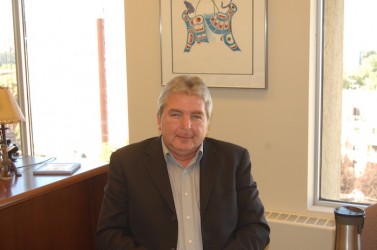Article Origin
Volume
Issue
Year
The province cannot afford to wait for the federal government to take the lead when it comes to improving the child welfare system for Alberta’s Aboriginal people, says child and youth advocate Del Graff.
In anticipation of a review by the province of the Child, Youth and Family Enhancement Act, the Office of the Child and Youth Advocate has undertaken a special report examining Aboriginal children in the child welfare system. While
numbers are decreasing, Aboriginal children are still disproportionately represented. The latest figures released by Alberta Child and Family Services show 69 per cent of children in care are Aboriginal.
Graff has joined with other child and youth advocates across the country in pushing their respective provinces to take steps.
In July, the Canadian Council of Child and Youth Advocates issued a news release saying it was “disappointed … that the premiers of Canada have not found a way to address concerns for which they have jurisdiction and on which they must and should act.”
This latest push by the CCCYA, for which Graff serves as vice president, keeps with the promise that the organization made during the closing ceremony of the Truth and Reconciliation Commission in Ottawa in June. Led by Graff, who promised to “be vigilant … for the most
vulnerable and marginalized youth and children in Canada,” he placed the report Aboriginal Children — Canada must do better: today and tomorrow into the Bentwood Box. Over the course of the commission’s six years, the Bentwood Box was used to collect gifts and tokens of reconciliation.
Being part of that celebration, says Graff, moved him.
“I was absolutely honoured,” he said. “It was one of those moments in my history that I will never forget.”
Graff says he didn’t feel the same way when Prime Minister Stephen Harper issued the apology to residential school survivors in 2008.
“It didn’t seem as if it had meaning,” said Graff. “I just felt that this apology is not going to make things better for those people that had been hurt.”
At the closing ceremony, the TRC released a summary of its final report which outlined 94 calls to action. The first five points focus on child welfare and call on all levels of government to “commit to reducing the number of Aboriginal
children in care….”
“That’s critically important,” said Graff. “The legacy of child welfare is something we work with every day.”
While the federal government has funding responsibility for First Nations children on reserve, the provinces and territories still have a role to play, he says. Federal funding goes to delegated First Nations agencies services, but it is the
provinces that ensure the services are carried out.
But working to make life better for Aboriginal children and their families goes beyond the different levels of government, says Graff.
“I always have the sense in my role that there’s so much more we can do,” he said.
Graff points to the fact that the majority of his staff is non-Aboriginal while about 60 per cent of the children they advocate for are Aboriginal. Strategy needs to be developed, he says, to recruit Aboriginal advocates.
“In my view, part of what I think is important in terms of how do we reflect those ideals, is to try and move those things forward, too,” said Graff.
- 1470 views

